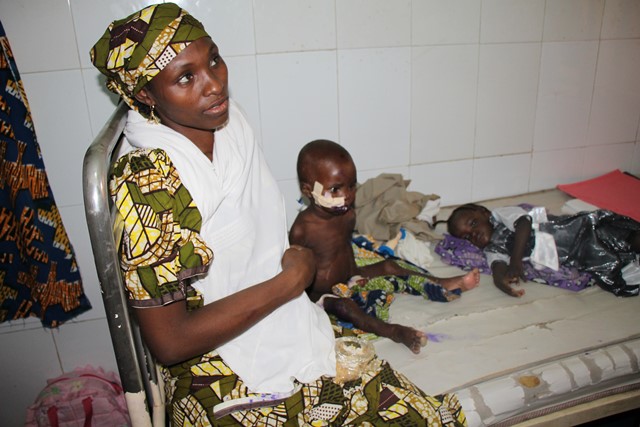Abuja: Nigeria is confronting a worsening malnutrition emergency, with an estimated two million children suffering from severe acute malnutrition (SAM), according to the Nigerian Nigerian Red Cross Society and the International Federation of Red Cross and Red Crescent Societies (IFRC). Shockingly, only one in five affected children currently receives treatment.
Fresh data collected in July 2025 across Katsina and Sokoto states paints a dire picture. In three local government areas Zango, Kankara (Katsina State), and Wamako (Sokoto State) nearly half of the children assessed (47–47.8%) were diagnosed with SAM.
The situation is equally alarming in Zamfara, Katsina, and Sokoto, where more children assessed were found to be malnourished than healthy.
The IFRC has now launched an emergency appeal to support the NRCS in scaling up its response, targeting one million people with urgent interventions.
The crisis is compounded by a severe shortage of lifesaving therapeutic foods. A survey across six northern states revealed that 84% of health facilities lack sufficient supplies of ready-to-use therapeutic food (RUTF), the essential treatment for SAM.
Funding cuts have further worsened the situation, with several international partners scaling back operations.
The UN has already announced plans to close half of its health clinics in northeast Nigeria, while northwestern states such as Katsina, Sokoto, and Zamfara have endured what aid agencies describe as a “silent emergency for years.
In late 2024, Médecins Sans Frontières (MSF) recorded SAM rates of 6.8–14.4% in parts of Katsina. By July 2025, NRCS figures from neighboring communities showed staggering increases to 47–47.8%, underscoring how quickly the crisis is spiraling out of control.
Beyond SAM, moderate acute malnutrition (MAM) is also widespread. Inventions, many of these cases will deteriorate into SAM, further overwhelming fragile health systems.
To curb this, Red Cross volunteers are working within communities to monitor MAM cases and promote local solutions.
Families are being taught to prepare “Tom Brown”, a nutritious flour mix made from grains, soy, and peanuts, which helps prevent moderate malnutrition from progressing to life-threatening levels.
Francis Salako, Head of the IFRC Abuja Delegation, warned of catastrophic consequences without swift support.
Without additional support, hundreds, if not thousands, of children will needlessly die of malnutrition in the coming months.
The fact that, in some LGAs, nearly ha lf of children are suffering from severe acute malnutrition and require hospitalization to survive is alarming.
Things are going to get worse if we do not act now.
The crisis in Nigeria comes as the IFRC rolls out its Africa Zero Hunger Campaign, a bold initiative targeting six countries Nigeria, Kenya, Ethiopia, the Democratic Republic of Congo, Mali, and Zimbabwe.
The campaign focuses on sustainable, community-driven approaches to tackling hunger and building resilience against future food crises.



